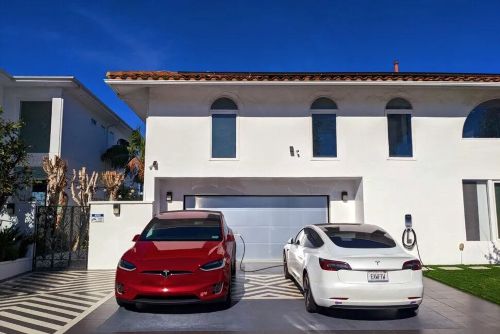


NACS vs. CCS: Key Differences Between EV Charging Standards
Introduction: The EV Charging Landscape is Evolving
As a leading EV charger manufacturer in China, Topper Company provides dependable electric vehicle charging stations and comprehensive charging solutions.
As electric vehicles (EVs) gain momentum, the charging infrastructure must advance alongside them. In North America, two major standards dominate the fast-charging conversation: the North American Charging Standard (NACS), pioneered by Tesla, and the Combined Charging System (CCS), supported by global automakers.
Both systems offer high-speed charging, but they differ in design, compatibility, and future prospects. As the EV market grows, understanding these distinctions is critical.
What Is NACS?
Originally developed for Tesla vehicles, the NACS connector is compact and supports both AC and DC charging through a single port. Its streamlined design is user-friendly and has been praised for its simplicity. Tesla’s Supercharger network—boasting over 50,000 global stalls—is built around this standard.
In 2022, Tesla opened the NACS standard to other automakers and networks. This strategic move gained further traction when the SAE announced plans to standardize the connector in 2023, paving the way for broader industry adoption.
What Is CCS?
CCS is an international charging standard that combines AC and DC charging capabilities. There are two versions: CCS Type 1 (used in North America) and CCS Type 2 (used in Europe and elsewhere). It builds on existing AC plugs (like J1772) by adding two extra pins for DC charging—resulting in a larger, bulkier connector.
Despite its size, CCS supports fast charging up to 350 kW and is the default standard in Europe, backed by companies like BMW, Ford, Hyundai, and Volkswagen.
Design and Charging Speeds
The NACS connector is sleek, lightweight, and more integrated into vehicle designs. Tesla’s Supercharger V3 stations offer up to 250 kW of charging, with potential for more depending on the vehicle.
CCS, though bulkier, can deliver higher theoretical speeds—up to 350 kW—via ultra-fast chargers like those from Electrify America. However, real-world speeds depend more on the EV’s battery system and charger performance than on the connector type.
Adoption and Network Availability
CCS is dominant globally and supported by most non-Tesla EVs and charging networks. In North America, it’s used by GM, Ford, Lucid, and others.
However, NACS is gaining ground quickly. Automakers like Ford, GM, Mercedes-Benz, Rivian, and Honda have announced plans to adopt NACS by 2025. Tesla’s Supercharger network, known for reliability and ease of use, is a major draw.
User Experience and Interoperability
Tesla’s NACS ecosystem offers a seamless experience: navigation, charging, and payment are all integrated. Superchargers automatically authenticate the vehicle, starting the session without user input.
CCS, while improving, can still feel fragmented. Users may juggle multiple apps and experience inconsistent performance. Efforts like Plug & Charge aim to fix this but aren’t yet universal.
Looking Forward: A Shift Toward NACS?
In North America, momentum appears to favor NACS. Tesla’s superior network, growing automaker partnerships, and SAE standardization strengthen its position. Globally, though, CCS remains entrenched due to regulatory mandates and infrastructure.
The future may involve dual-standard compatibility or widespread use of adapters—ensuring flexibility for consumers no matter which plug wins.
Conclusion: A Tale of Two Standards
NACS offers a sleek, integrated approach, while CCS provides open, global compatibility. The evolving EV landscape may not produce a single winner, but the shift toward interoperability and user-focused infrastructure is a win for all EV drivers.Know more about Google SEO Directory
